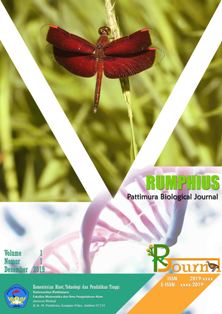ANTIBACTERIAL ACTIVITY OF SEAGRASS EXTRACT Enhalus acoroides WITH DIFFERENT SOLVENTS AGAINST Streptococcus mutans BACTERIA CAUSE DENTAL CARIES
Abstract
Treatment of Streptococcus mutans infection is generally done using antibiotics or chemical mouthwash, but long-term use can cause bacterial resistance and side effects for health. Therefore, it is important to find alternative treatments that are safer and more effective, one of which is through the use of medicinal plants. One plant that has potential as a source of antibacterial compounds is seagrass (Enhalus acoroides), which has been recognized in various studies to contain bioactive compounds such as flavonoids, saponins, and tannins, which can function as antibacterial agents. The purpose of this study was to determine the antibacterial activity of E. acoides extracts extracted with different solvents against S. mutans bacteria. The design used in this study is a completely randomised design (CRD) model. Testing the inhibition zone of E. acoroides using piper disc diffusion method with different concentrations of 25%, 50%, 75% and 100% with three replicates. Inhibitory zone diameter data were analyzed used ANOVA significant test and differences between treatments, and test of Real Honest Differences (BNJ) was conducted. Methanol and ethyl acetate extracts of E. acoroides can inhibit the growth of S. mutans bacteria that cause dental caries, and ethyl acetate has a stronger effect than methanol at higher concentrations.
Downloads
Copyright (c) 2024 Firman Firman; Fredrik Rieuwpassa, Meigy Nelce Mailoa

This work is licensed under a Creative Commons Attribution-NonCommercial-ShareAlike 4.0 International License.
Authors who propose a manuscript and have it approved for publication know that the manuscript will be registered and become part of the RPBJ. Authors and readers understand that this journal is open and all its contents can be accessed freely, provided that RPBJ is still listed as the source of information. The hope is that this journal can become a vehicle for exchange and scientific knowledge for society and the scientific community, especially in the field of Biology and other branches of science.









